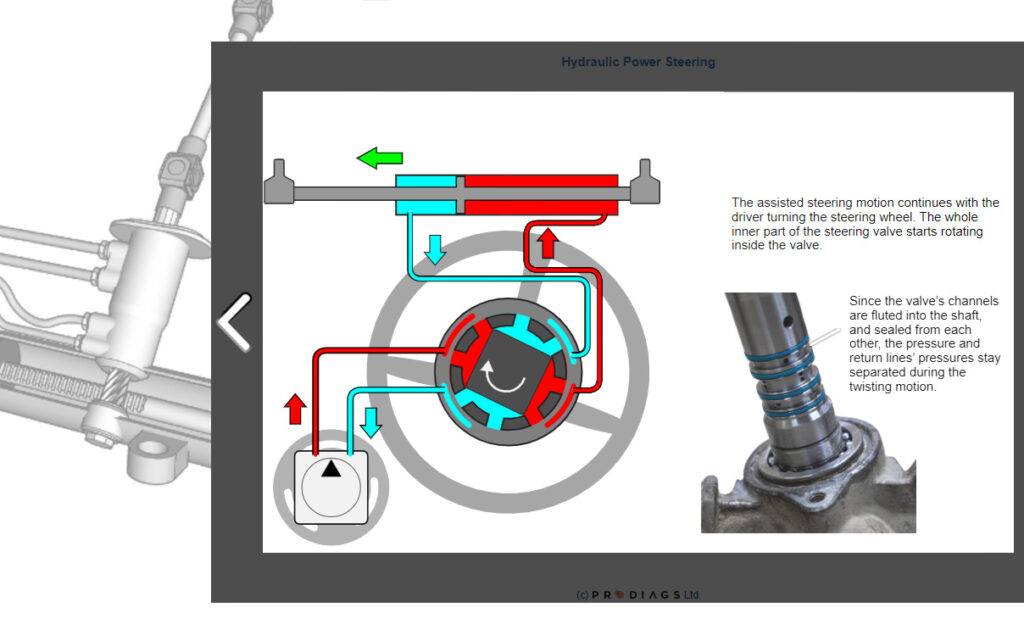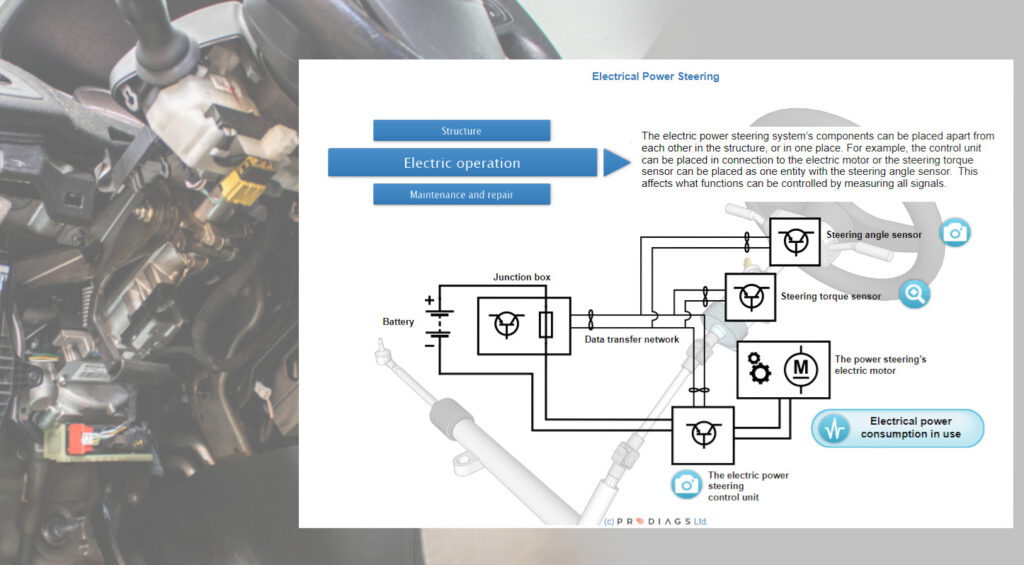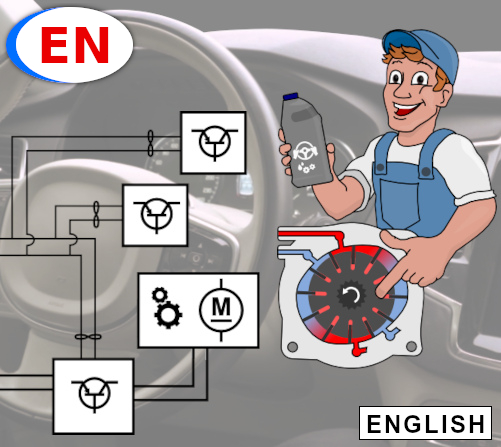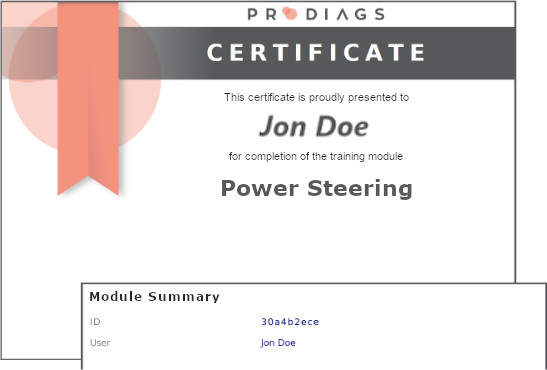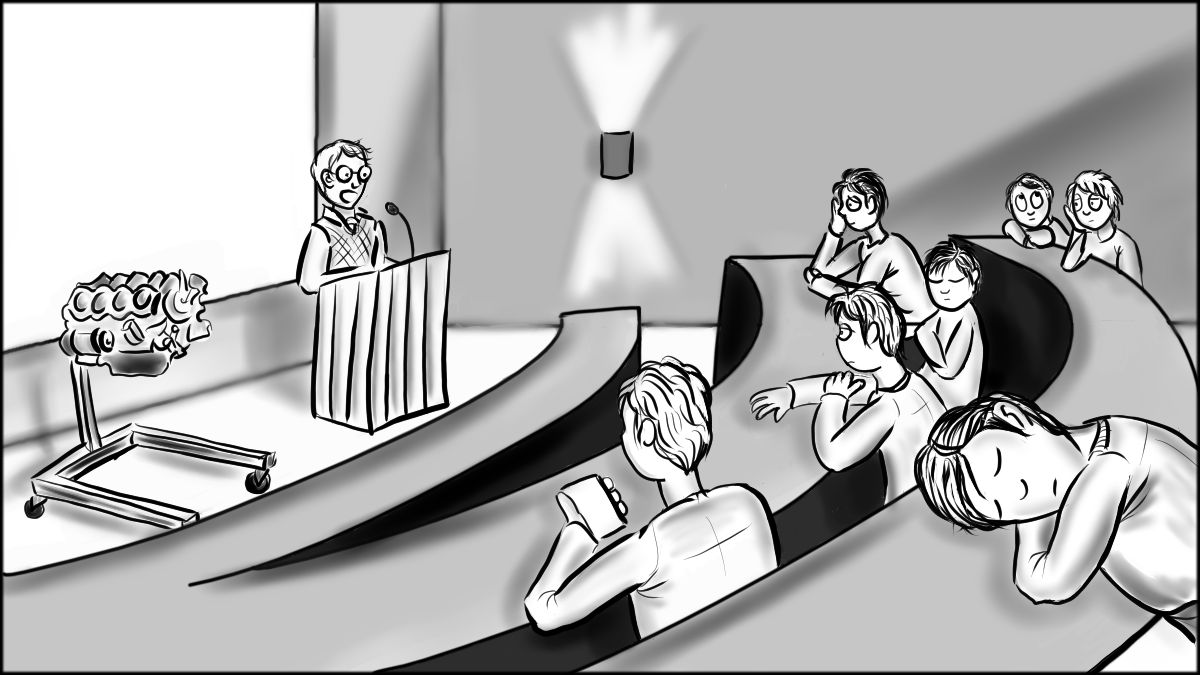Why this module?
All on-road vehicles have power steering; hydraulic, electric or a combination – electro-hydraulic. In vehicles with a combustion engine, the power steering was quite similar in different makes and models for a long time, but modern power steering systems are smarter and more efficient.
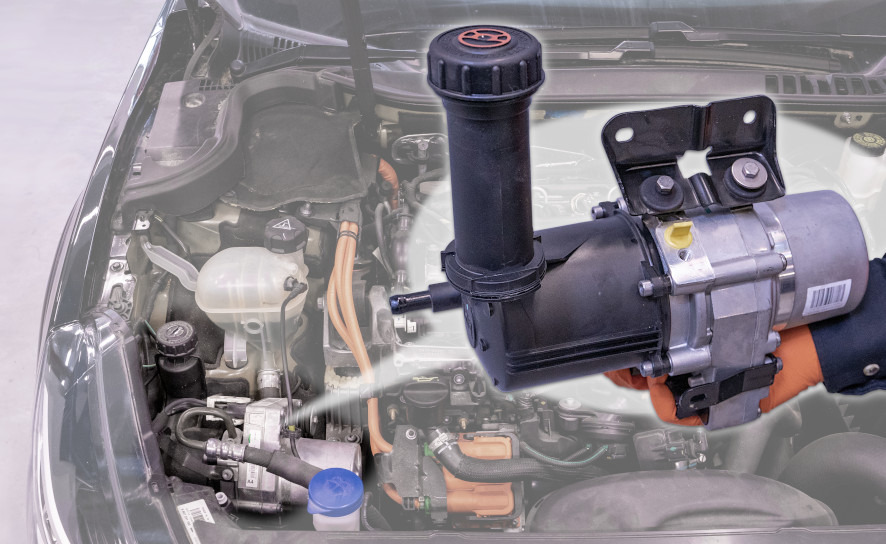
What will you learn?
The power steering and steering structures are located in the passenger compartment and engine bay. The most common jobs are checking the hydraulic systems fluid level and checking for leaks, and replacement of the joints connected to the steering rack and wheel support. When performing repairs inside the cabin, the steering column is often well hidden, and the operation of it and components connected to it is not always understood.
In the study, you will go through different power steering structures, their components and operation. You will understand how the fluid pressure is led through the steering valve in direction with the steering motion when the driver starts or finishes the motion.
The electrification of power steering systems has created structures that have allowed for moving components, partly or completely, from the engine bay into the cabin. Electric power steering systems have brought solutions like Column EPS, Single-Pinion EPS, Dual-Pinion EPS and Parallel Axis EPS. The development of power steering systems have freed up space in the engine bay and brought more precise steering and sensors, such as the steering torque sensor and steering angle sensor.
